For the growing movement of eaters looking to align their values with their plates, what does it mean when you purchase regenerative certified food? And can global certification systems find common ground in their definitions?
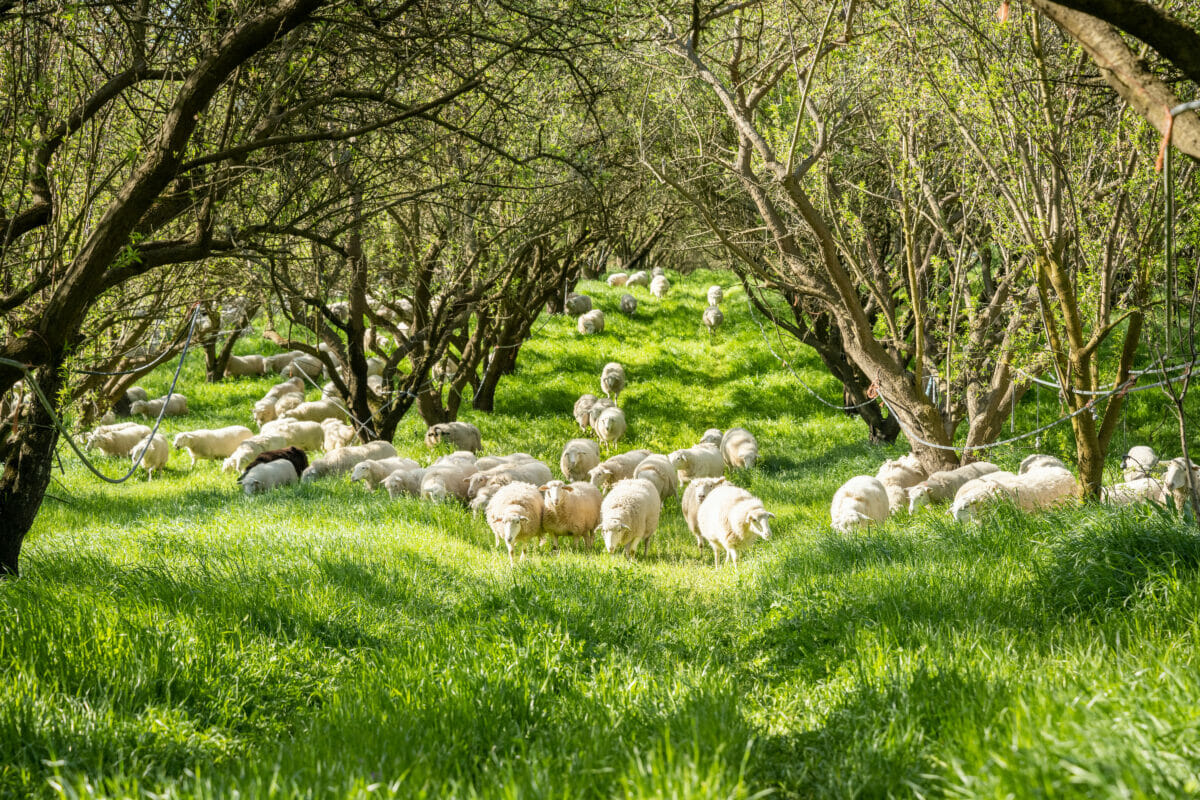
Since the resurgence of regenerative agriculture, farming has never been sexier. The star-studded film Kiss the Ground, featuring celebrities Woody Harrelson and Tom Brady, put the movement on the map in 2020, claiming that regenerative farming could be the solution to, not the cause of, climate change, biodiversity loss and soil erosion.
But what does regenerative agriculture mean? There is still no hard and fast definition despite this excitement and celebrity endorsement. Now, 60 percent of the biggest agribusinesses in the world use the term, all in different ways. It’s official: Regenerative agriculture has been hijacked.
Two organizations want to put an end to the wild west of claims and prove, through certification, that food labeled regenerative is genuinely the gold standard of sustainability and not just another marketing buzzword.
But it’s not quite that simple. Even these two organizations—Regenerative Organic Certified (ROC) and the Land to Market—can’t agree on what, exactly, regenerative farming means. They have different approaches to certification, according to Peter Newton, associate professor of environmental studies at the University of Colorado Boulder.
“This distinction,” says Newton, “raises interesting implications about how you define regenerative agriculture.”
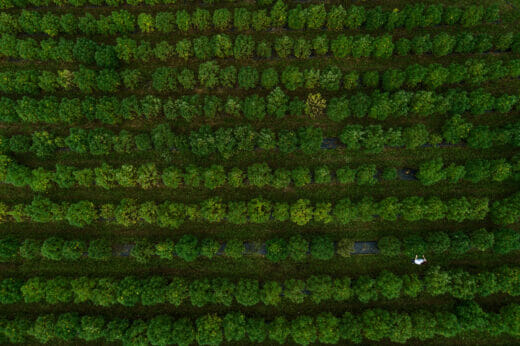
Photography courtesy of Regenerative Organic Alliance.
For some, the term is a step beyond simply organic farming. Elizabeth Whitlow, executive director of Regenerative Organic Alliance, the non-profit that governs ROC, says its new standards came into existence because “organic isn’t enough.”
The certification, funded by the Rodale Institute, Patagonia and Dr Bronner’s, insists on five practices to improve soil health: integrating livestock, keeping the soil covered, minimizing soil disturbance, incorporating diversity and zero chemicals, as well as a soil test every three years. Plus, there are rigorous worker and animal welfare standards, such as paying staff a living wage and ensuring animals can display natural habitats.
“A lot of those principles are missing from the federal organic program,” says Whitlow, who views the social and animal welfare outcomes as just as important as the carbon these practices should, in theory, store.
But she maintains that “organic is still really important,” and that’s why USDA organic standards, food grown without most pesticides and synthetic fertilizers, is the minimum baseline for the ROC certification.
“Doing no-till while using [glyphosate] is not going to regenerate the planet,” says Whitlow, who points to the spectrum of regenerative farmers, some who prefer not to plough but still spray herbicides.
Nut farmer Benina Montes of Burroughs Family Farms in California says she chose to certify her almonds with ROC because of the environmental and economic benefits of ROC’s practices and brand.
“By having some diversity and building soil health, we will be more resilient to drought and major rain,” says Montes. As a result of the ROC standards, livestock now graze the cover crops in the almond orchards, fertilizing the soil with their manure and providing space for beneficial insects.
Plus, the buzz of regenerative farming has provided ample commercial opportunities for Montes and the farm’s almond butter, with contracts with major retailers such as Whole Foods and Amazon.
“It’s all tied together,” says Montes, who sees strong synergies between soil health, staff well-being and profit. Her family farm has been organic certified since 2006, but it only adopted the ROC standards in June 2022. She is excited to see if the new regenerative organic practices improve soil health, having tested it at the start of the certification process, with planned tests every three years to track progress.
But whether the soil will show changes or indeed lead to ROC’s promised outcomes of “mitigating climate change and restoring communities” has yet to be seen. And the assumption that it will work is a bone of contention for Newton and what distinguishes the two sets of standards.
“What scientists, researchers and also consumers might reasonably ask is, ‘What is the evidence that shows these practices will reliably lead to these outcomes?’” asks Newton.
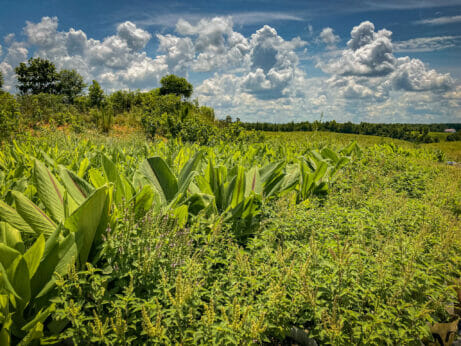
Photography courtesy of Regenerative Organic Alliance.
In contrast to this practice-based certification, the Savory Institute’s Land to Market certification is verified through outcomes. In theory, this means the standard directly measures and rewards a farmer’s tangible progress on carbon storage, biodiversity, soil health and water, but it doesn’t matter what practices a farmer employs to get there.
In the words of Land to Market’s co-CEO, Chris Kerston, “We’re letting the outcomes speak for themselves.”
“Just by removing chemicals doesn’t mean that the land is healing,” says Kerston. “You can feed an animal grass and still overgraze the hell out of the land.”
Land to Market brand certifies land through its third-party Ecological Outcomes Verification (EOV) methodology developed by Savory Institution founder and TED Talk phenomenon Allan Savory more than 20 years ago as a management tool for graziers.
While ROC certifies a wide spectrum of crops, livestock and fibre, Land to Market only covers animal products: meat, dairy and leather.
Land to Market frames its products as coming “from land that is regenerating.” If farmers, through an independent EOV test, show that the ecology—based on soil health, carbon storage, biodiversity and water—is improving, then their land can be certified and they can sell their animals for a premium to brands that increasingly want to reduce the impact of the products, such as EPIC Provisions, Timberland and Applegate.
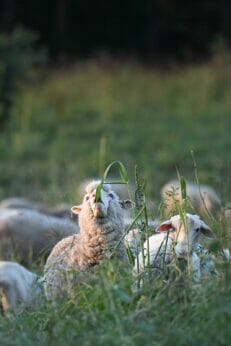
Photography courtesy of Cabriejo Ranch.
For livestock farmer and Land to Market certified producer Reuben Hendricks of Cabriejo Ranch, good ecology is good for business. The higher prices he can justify are “just the gravy on top” of focusing on land quality.
“[We] make more money by improving the land management,” says Hendricks. At his ranch, they perform short-term monitoring of data points such as species diversity and the amount of bare soil. The results have impressed Hendricks, too. In a carbon test, the organic matter in the sample has increased from one percent in 2018 to slightly less than five percent in 2023.
“This holds and stores water for longer, increases the fertility of the soil and diversifies plant species, which increases nutrition to the animals,” says Hendricks. It also means “more carbon in the ground.”
Instead of prescribing practices that farmers can or can’t do, Kerston says it’s a “model of continuous improvement,” which is accessible to any farmer, whether they are on degraded land or a top-performing producer, as long as they are improving the state of the land.
Newton suggests this model could be “more open to innovation” than practice-based certifications, because an outcome such as carbon sequestration could be achieved through any number of mechanisms.
Meanwhile, Whitlow from ROC maintains that it matters what practices you use to get to the outcome.
“I can load my truck up with coal dust and spread it all over my fields. What’s that going to do to my carbon?” asks Whitlow. “You can totally game the system.”
Kerston, however, insists that bad practices such as using synthetic fertilizer consistently show up in the data. “If you’re using the wrong tools, we’re going to see it in the outcomes.”
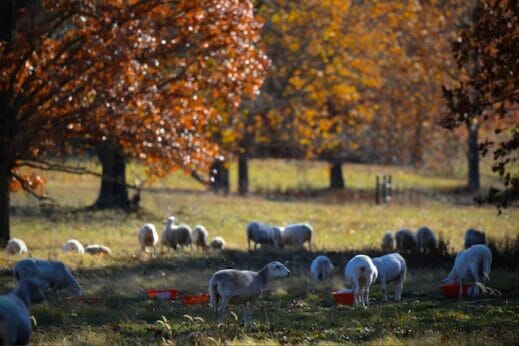
Photography courtesy of Cabriejo Ranch.
But outcomes of the land don’t show the whole picture in a globalized food system. Although feedlots are banned, Land to Market doesn’t yet monitor animal feed. This means that a farmer’s land could be verified to be regenerative, but they could still feed their animals soy and corn sprayed with chemicals from deforested sources.
That’s why the product itself is not regenerative, only the land on which the animal is raised.
The Land to Market community is growing at an impressive rate, with five million acres and 1,152 farms being monitored through EOV and “doubling every six months,” according to Kerston.
ROC currently certifies more than one million acres of land globally, 142 certified farms and nearly 50,000 smallholders (farms between one and four acres) but is limited because producers have to be organic certified first, a process that takes three years. During this transition period, farmers have to adhere to organic regulations without benefiting from the price premium. There are currently 8.3 million acres of organic certified land in the US.
Newton highlights that exclusivity isn’t necessarily a bad thing. “Certification programs encourage the high-performing producers to push the boundaries of what’s possible.”
“The role of government and regulation can be to push up the bottom,” says Newton.
Ultimately, the aim for these certifiers is for all farming to be regenerative. But for the government, brands and consumers to support it, they need to know what that means first. While questions remain around who gets to define regenerative agriculture, at least there are two clear criteria and definitions. That much is a start.
Measured organic matter in soil going from 1% to 5% in 5 years. Highly unlikely. Makes mockery of the hard work and time required to improve soil health and points out the lack of transparent verified measurements and standards on soil health
Catchy title, but I felt a major element was missing here. Regeneration has it’s roots in indigenous lifeways and the creation of systems of reciprocity. Neither certification (none on the market whatsoever, in fact) adequately address power dynamics in global colonial supply chains. They are simply a reframe, a repackaging of source truths harvested from indigenous knowledge while discarding the truly transformative (and regenerative) aspects.
Celebrities did not put regenerative ag on the map, as you say. They picked up on a growing trend that started long ago. Celebrities don’t create anything, they copy and steal from those who do – those without millions of brainwashed cult-like followers. Burn down the elite class and the working classes gain freedom, and wealth.
Is it practical?
Nothing mentioned about crop yield. Remember we have 8 billion people to feed on planet Earth.
Enough of these bogus “feel good” schemes. All I see are opportunities for money hustles at the expense of the farmers and the consumers. Show me proof that “organic” or “regenerative” or whatever flavor-of-the-day is actually means anything. Supermarket tomatoes still have no taste whether they were “organically” grown or are the product of some vague “regenerative” farming practice.
Much talked about ORGANIC FARMING has not caught up around the world. Are there any proven facts/results about this REGENERATIVE AGRICULTURE yielding higher than the present levels of yield. As the compitative demands for land ( land for food production, housing, communication etc.,) operates all the while without increasing the yields per unit area we have no alternatives at the moment to feed the ever increasing population around the world.